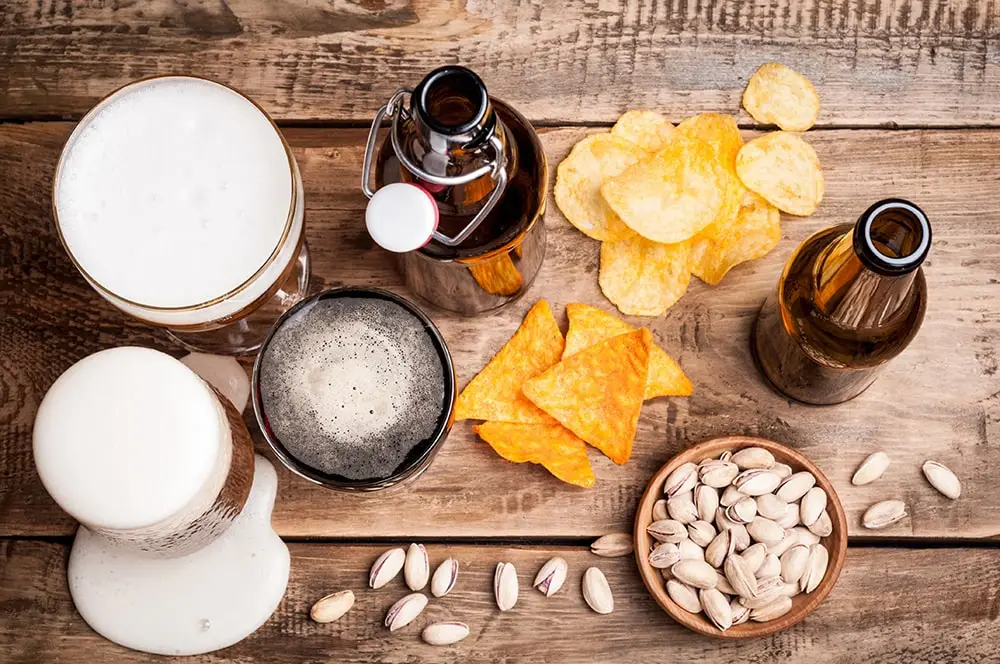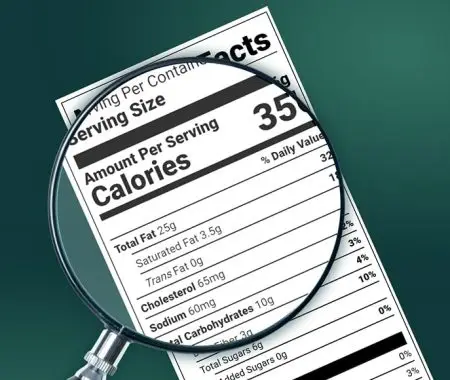In the food and beverage industry in the UK, correct labeling of alcoholic beverages is crucial for both consumers and producers. Nutrition labeling provides essential information that helps consumers make informed choices about their alcohol consumption and calorie intake. For food manufacturers and distributors, understanding and complying with these labeling regulations is not just a legal requirement but key to building consumer trust and brand integrity.
Additionally, the UK’s exit from the European Union has significantly impacted alcohol labeling regulations. While many EU rules have been retained, Brexit has allowed the UK to begin setting its own standards, leading to notable changes in areas such as alcohol by volume (ABV) declaration and the presentation of nutritional information.
This guide will explore current UK requirements for nutrition labeling on alcoholic beverages, recent regulatory changes, and potential future developments, providing essential information for creating compliant and informative labels in this evolving landscape.
Current UK Alcohol Labelling Requirements

When it comes to labelling alcohol beverages in the UK, there are mandatory elements that must be included on every label. These labeling requirements ensure that consumers have access to essential information about the product they’re purchasing and how it will affect their health and wellbeing.
Mandatory Information on Alcohol Beverage Labels
This information is mandatory when labeling alcoholic beverages in the UK:
- The official name of the drink
- The physical address of the producer
- Country of origin (if applicable)
- Strength of the alcohol as a percentage (if over 1.2% ABV)
- Net quantity (in ml)
- Lot number
- Use-by date (for drinks less than 10% ABV)
Alcohol by Volume (ABV) Labelling Rules
The alcohol content must be clearly stated on the label and applies to all alcoholic beverages over 1.2% ABV. This information is crucial for consumers to understand the strength of the drink they’re consuming.
- ABV must be shown to one decimal place
- Tolerance levels for these decimals are in place to account for slight variations:
- +/- 0.5% for beers and wines up to 5.5% ABV
- +/- 1% for beers and wines above 5.5% ABV
- +/- 0.3% for other alcoholic drinks
Differences from Standard Food Labels
Although certain elements do overlap, alcohol beverage labels differ from standard food labels in a few key ways:
- They are exempt from ingredients list (except allergens)
- They are exempt from nutrition declarations (with some exceptions)
These exemptions recognize the unique nature of alcohol beverages and their production processes. However, it’s important to note that while full ingredient lists aren’t required, any allergens present must still be declared.
Nutrition Labelling for Alcohol Beverages

Nutrition labelling for alcoholic beverages in the UK follows a distinct set of rules, balancing consumer information needs with industry practicalities. According to current requirements, it is mandatory to label alcoholic beverages below 1.2% ABV and voluntary for beverages above 1.2% ABV.
When nutritional information is provided voluntarily for drinks above 1.2% ABV:
- It must follow the standard format used for other food products
- The declaration can be limited to energy value only
This flexibility allows producers to provide useful nutritional information to consumers without the full complexity of a complete nutrition facts table.
Energy (Calorie) Labelling Requirements
When energy information is provided, it must adhere to these rules:
- Must be expressed in both kilojoules (kJ) and kilocalories (kcal) per 100ml
- Optional to provide per portion, in addition to per 100ml
Specific Energy Conversion Factor for Alcohol
When calculating the energy content of alcohol beverages, a specific conversion factor is used:
- 29 kJ/g or 7 kcal/g for ethanol
This factor accounts for the higher energy density of alcohol compared to other macronutrients like carbohydrate content or proteins. Additionally, no health claims or nutrition claims can be made on alcohol products as it is not generally promoted for public health and overconsumption can cause negative side effects for consumers.
By understanding these requirements, distillers and brewers can ensure their products comply with UK regulations while providing consumers with the further information they need to make informed choices about their alcohol consumption.
See How FoodLabelMaker Can Help You
Labelling Alcoholic Drinks Below 1.2% ABV
Specific rules apply to beverages containing less alcohol, so that there is clarity for consumers and to differentiate these products from their higher-alcohol counterparts.
- Precise terminology is crucial for low-alcohol and non-alcoholic beverages:
- “Alcohol-free”: not more than 0.05% ABV
- “De-alcoholised”: not more than 0.5% ABV
- “Low alcohol”: not more than 1.2% ABV
- “Non-alcoholic”: Should not be used with names typically associated with alcoholic drinks, except for communion or sacramental wine made from unfermented grape juice. These products must clearly state their exclusive intended use.
These descriptors help consumers make informed choices, especially for those seeking to reduce their alcohol intake or avoid it entirely. It’s also important to note that the production of these drinks often involves additional processing aids to achieve the required alcohol levels while maintaining flavour profiles similar to other spirits.
Allergen Labelling for Alcoholic Beverages
Allergen labeling is a critical aspect of alcohol packaging, as certain allergenic ingredients used in production could cause health problems for sensitive individuals.
The requirements for what must be included on alcoholic beverage labels are:
- 14 Major Allergens: Any of the 14 major food allergens present in the product must be declared on the label.
- Sulphites: If sulphites (also known as sulfur dioxide) are present at levels over 10mg/L, they must be declared.
Common Allergens in Alcoholic Drinks
Several allergens are commonly found in alcohol beverages due to ingredients or processing methods:
- Sulphites: Used as a preservative in many wines and some beers.
- Egg: Egg whites are occasionally used in the fining process for wines.
- Fish: Isinglass, derived from fish bladders, is used to clarify some beers.
- Milk: Casein, a milk protein, is occasionally used in wine production.
Clear and extensive allergen labeling is crucial for consumer safety, as it allows individuals with allergies or intolerances to see the major food allergens present in the alcohol and make informed choices about the beverages they consume.
Recent Changes and Future Developments

The landscape of alcohol labelling in the UK is evolving, with recent changes affecting wine labelling and potential future developments on the horizon.
Updates to UK Wine Labelling Regulations:
Recent changes have introduced more flexibility for wine producers:
- ABV Declaration Flexibility: Producers can now use any decimal place when declaring alcohol content, allowing for a more precise representation of their products.
- 95% Rule for Named Grape Varieties: Previously, if grape varieties were named on the label, 100% of the wine had to be made from those varieties. This has been relaxed to 95%, giving winemakers more flexibility when blending.
These changes align UK regulations more closely with international standards, potentially benefiting both producers of domestic wines and importers of table wines.
Potential Future Changes
The UK government is also considering several changes that could significantly impact alcohol labelling:
- Mandatory Calorie Labelling: There is ongoing discussion about requiring calorie information on all alcoholic beverage labels which aims to address concerns about excessive consumption and its health impacts.
- Alignment with or Divergence from EU Regulations: As the UK charts its post-Brexit course, there’s potential for further alignment with or divergence from EU regulations, which could affect labelling requirements for imported wine and other alcohol beverages.
Common Labelling Pitfalls and How to Avoid Them
Frequent Labelling Errors
- Incorrect ABV Declaration: Ensure your ABV is accurate and within the allowed tolerance levels. Regular testing during production can help maintain accuracy.
- Missing or Unclear Allergen Information: Always clearly state any allergens present, even in trace amounts. This is crucial for consumer safety.
- Misleading Health Claims: Avoid making any health claims on alcoholic beverage labels, as these are generally not permitted.
- Inconsistent Information: Ensure all information on the label is consistent, especially when updating recipes or production methods.
- Overlooking Requirements for Unstandardized Beverages: For unique or craft beverages, ensure you’re meeting all labelling requirements, which may differ from standard categories.
Consequences of Non-compliance:
Failing to comply with labelling regulations can have serious repercussions:
- Financial Penalties: Fines of up to £5,000 per offence can be imposed.
- Reputational Damage: Non-compliance can lead to negative publicity and loss of consumer trust.
- Product Recalls: In severe cases, products may need to be recalled from the market.
- Legal Action: Repeated non-compliance may result in legal action against the company.
Best Practices for Compliant and Appealing Labels
Creating labels for alcoholic beverages that are both compliant with regulations and visually appealing can be challenging. Here are some tips to help you achieve this balance:
- Prioritize Clarity: Ensure all mandatory labeling information is easily readable. Use clear fonts and appropriate contrast between text and background.
- Organize Information Logically: Group related information together. For example, place all nutrition facts in one area of the label.
- Use Visual Hierarchy: Make the most important information (like ABV and allergens) stand out through size, color, or positioning.
- Incorporate Brand Elements: While ensuring compliance, find creative ways to incorporate your brand’s visual identity into the label design.
- Consider Label Material: Choose a material that not only looks good but also ensures the longevity of the printed information, especially for products that may be stored in damp conditions.
- Seek Label Approval: While not mandatory in the UK, having your labels reviewed by a regulatory expert can help ensure compliance before printing.
Remember, the goal is to provide adequate information to consumers while maintaining your brand’s aesthetic appeal.
Tools and Resources for Correct Alcohol Labeling Requirements
Food Label Maker offers comprehensive solutions to help you create compliant and appealing labels for your alcohol beverages. Their Nutrition Facts Software automatically calculates nutrition information based on your recipe, ensuring accuracy and compliance with UK regulations. To assist with design, they offer customizable templates that incorporate all mandatory information with your unique business flair. They provide regular updates on the latest labelling requirements, helping you maintain compliance in an ever-changing landscape.
The Food Standards Agency (FSA) provides detailed guidance on food and drink labelling requirements, offering a wealth of compliance information. The Department for Environment, Food & Rural Affairs (Defra) regularly publishes updates on food and drink regulations, including those specific to alcohol. These official sources are invaluable for staying informed about regulatory changes. Additionally, industry associations such as the Wine and Spirit Trade Association offer valuable resources and updates on labelling requirements, providing insights from within the industry itself.
Conclusion
Correctly labelling alcohol beverages is crucial for legal compliance, consumer safety, and brand integrity in the complex and ever-changing post-Brexit landscape. To create labels that meet all legal requirements while effectively communicating your brand’s value, it’s essential to include all mandatory information, stay informed about regulatory updates, pay particular attention to ABV declarations and allergen information, and balance compliance with aesthetics.
Food Label Maker offers comprehensive solutions to help you navigate these challenges, from nutrition facts software to compliance-checking tools. A well-designed, compliant label is an investment in your product’s success and your company’s reputation, and staying informed about alcohol labeling regulations is key to maintaining that compliance in an evolving regulatory environment.



